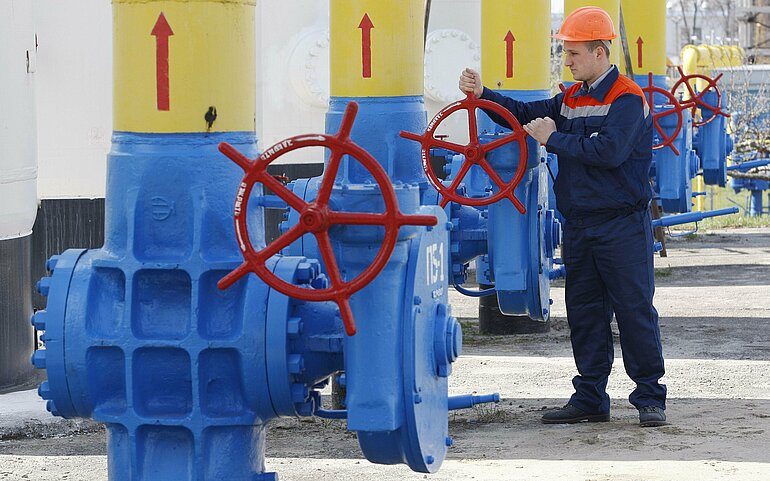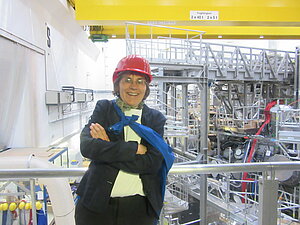“You can’t use each energy type as a foreign policy weapon in the same way”

In her book 'Russian Energy Chains', Margarita M. Balmaceda analyses the value chains of Russia’s three largest fossil fuel exports. Using the ‘calm-before-the-storm’ period from October 2011 to March 2014 as a snapshot representative of broader processes, she traces the journey of an exemplary molecule of each gas, oil and coal from production in Russia through transit and processing in Ukraine to the end consumer in Germany. The book builds on insights from economics, sociology, political science and critical geography in order to understand the fine line between opportunity and risk, threat and temptation, in Russia’s energy relations with post-Soviet states and wider Europe.

In Germany, the public debate about Nord Stream 2 is a constant reminder of how Russia uses energy to exercise its power over other states. In your book, you argue that the situation is more complex than that. What is missing from the picture of Russia using energy to wield power over other countries?
First, let me say that I have no doubts that Russia uses energy for foreign policy purposes. Still, there are two things that have been missing from this picture for a long time. The first thing that tends to be forgotten are the actors outside of Russia, actors in Germany, Belarus, or Ukraine. I have written about them in my other books. The second thing that is missing is the awareness that different types of energy have different characteristics, which limit what you can do with them. So I wanted to discuss the technical side as well, and show how it affects the way you can use energy for political pressure, which is different for different types of energy.
You say that Russian energy also brings opportunities for local actors. How have countries like Ukraine benefited from energy dependence?
Here I want to differentiate between local actors as individuals and the state as a whole. Local actors benefited from this system of energy relations mainly because of three things: murkiness, loopholes, and the possibility of arbitrage between different markets – the fact that that kind of system allowed different prices for the same good. At the same time, it is not simply a matter of bad oligarchs reaping all the rewards. In the short term, it could be argued that the states and societies in question benefited as well. Being part of that system, in one way or another, allowed those states and their budgets as a whole to benefit from Russia's export system, either through lower prices for oil and especially for natural gas, or, in the case of Belarus, through sharing in the profits on Russian oil exports through its role in refining.
As part of that system, states could rely on a certain annual revenue from transit – either in the form of lower prices (as in the case of natural gas before transit payments were charged separately) or through actual transit fees. In the case of natural gas, being part of a very large-scale export system meant that the pipeline was loaded at an optimal level to maintain pressure in the system, keeping the system working properly for domestic supply purposes as well.
This brings us back to the technical side. In your book, you analyse the value chains for oil, coal and gas in separate chapters. Why is it so important to differentiate between these three fossil fuel exports from Russia?
First of all, these three energy types cannot be used as ‘foreign policy weapons’ in the same way. The difference between natural gas and oil is particularly clear: it may be relatively easy to store oil, but it's very difficult to store natural gas. The different levels of labour intensity along the value chains of each fuel also make a big difference: natural gas involves more processing at the beginning and, if used for electricity production, at the end. With oil, on the other hand, because of the way it’s processed you can have more actors in the middle, in the phase between production and end consumption. There’s also a difference in terms of the investments required: natural gas is a really fragile, ethereal thing. To make it move, you need a highly specialized infrastructure specifically intended to maintain certain levels of pressure and keep the gas moving. Thus, much higher investments are needed than in the case of oil. The different methods of extraction, storage, processing and transportation for the different energy types also influence the extent to which local actors can play a role.
Coal is often neglected in the literature. You argue that in the case of coal, Ukraine followed a different strategy from other countries, especially in Donbas. What was the impact of energy materiality in this case?
Due to its materiality, coal is a very labour-intensive fossil fuel. In the 1990s, about two per cent of the Ukrainian population was involved in one way or another in the coal sector. There was a great fear that if the sector collapsed, this would lead to mass unemployment and political uprisings in Donbas. So not losing this source of employment was the number one priority for Ukrainian politicians. At the same time, the international financial institutions that Ukraine was working with were calling for a restructuring that would allow for bankruptcies and the closure of mines that were not economically viable. The reason why things happened this way in Ukraine had partly to do with fear of unemployment and partly with the idea of coal as a national treasure, as an alternative that Ukraine could turn to should Russia decide to stop supplying natural gas or oil. This idea combined with other factors, such as fear of miners’ political mobilization, to prevent the reform of the system. In addition, at some point in the story the people who would later become the coal and steel oligarchs understood that they could take those subsidies, turn them into part of the steel production process, and make even higher profits by exporting to the European Union. Ukraine’s coal subsidies helped them on their way to becoming the most important oligarchs in Ukraine and some of the richest individuals in Europe.
Your analysis demonstrates that there are strong path dependencies in energy politics, with decisions involving political, economic and technological structures, for example the interconnectedness of supply systems. That would seem to make change very difficult. What are the options for Ukraine? And what role can the EU play?
Path dependencies are strong, but they mainly tell us that change has to come from outside the system. If we focus on Ukraine, there are a couple of ways in which this is already happening. First, due to changes in the policies of the country that Ukraine’s role in the value chain is tied to: Russia. When Russia decides that it does not want to transport gas through Ukraine, that is an external factor that has an effect, whether Ukraine likes it or not. A second shock to the system has to do with EU policies: Ukraine may want to prevent the use of Nord Stream 2 as a way to protect its transit role, but if Europe decides not to purchase Russian natural gas or oil to the same degree as it has done so far, Ukraine won’t be able to play its current role in those value chains. A changed awareness of the ecological context in which these value chains are situated will also lead to change. As Europe moves further and further towards renewables, something that is already clear in Germany, the role of transit states will need to change. Thirdly, and you see that in the coal value chain, you have the carbon offset tax discussion as a result of this ecological awareness. The idea of taxing high-carbon production is also changing the environment in which you can make profits from, for example, steel exports. Therefore, there is a possibility of change, but it is mainly change coming from the outside, driven by exogenous factors. Right now, this is creating a challenge for a country like Ukraine. It is not very clear how it is adapting and how it will adapt, but it needs to adapt because I don't think that the current system is sustainable in the long term.
The interview was conducted by Stefanie Orphal, Communications director ZOiS.
Margarita M. Balmaceda is professor of diplomacy and international relations at Seton Hall University, associate at Harvard University’s Davis Center for Russian and Eurasian Studies and at the Harvard Ukrainian Research Institute.
Margarita M. Balmaceda: Russian Energy Chains. The Remaking of Technopolitics from Siberia to Ukraine to the European Union. Columbia University Press, 2021.
